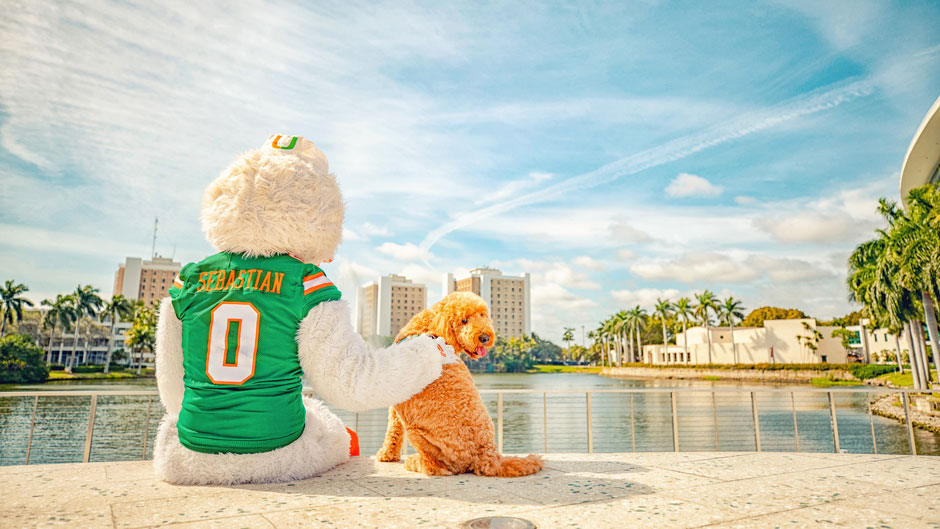As stay at home orders begin to lift across the United States and pet owners eventually begin to transition back into their previous routines of schooling, commutes, long days at the office, extracurriculars, and even travel, many may see their pets exhibit emotions and behaviors signaling separation anxiety.
Dogs have become accustomed to having their humans home with them, relishing an abundance of quality time, extra walks, and additional petting and treats. They won’t like it very much when their routine changes.
Roger Mugford, an animal psychologist who has worked extensively with the British royal family, told The Times of London that owners should start preparing their pets now to cope when coronavirus restrictions are lifted, as they have likely built up a reservoir of overdependency. The American Veterinary Medical Association reports that separation anxiety is one of the most common canine behavior problems in the United States, diagnosed by 20 to 40 percent of animal behavior practices.
Mark Rowlands, professor and acting chair in the Department of Philosophy at the University of Miami who has studied the special bonds between people and animals, weighs in on pet anxiety and how to help our canine companions adjust when the lockdown ends.
What are some of your observations related to the relationship between humans and domesticated pets?
I know most about dogs, and so I’ll restrict my comments to them. You will find a dazzling variety of personalities in dogs, as many and varied as you find in humans. But they are all extremely social creatures and don’t like to be separated from their pack. How much they don’t like it will vary from dog to dog and perhaps from breed to breed. In my experience, herding dogs, in particular, like their “flock’’ to be all together in one place. This is unfortunate, since modern life often mandates long periods of separation, five or more days a week. For many dogs, this is a disaster. But it can manifest itself in several different ways. Some dogs simply get bored and depressed. Some get used to it or seem to do so. In others, however, separation anxiety is the result.
Have you ever witnessed or experienced animal separation anxiety?
Oh yes. The most separation-anxious animal I’ve ever known was a 150-pound wolf hybrid, named Brenin, with whom I was fortunate to spend a decade or so living and traveling. His anxiety would show itself through immensely destructive behavior. He once ate his way through a wall between the kitchen and laundry room, in an effort, I assume, to make his way out into the backyard. Another time, when I had to leave him for a couple of hours in the car—on a car ferry between Wales and Ireland—he completely ate the inside of my car: seats, seatbelts, and steering wheel. He won, of course. I hardly ever left him on his own! I even had to take him to the classes I was teaching. He liked that.
What are the warning signs to let you know that your pet is exhibiting anxiety?
The destructive behavior I just described is a common way that separation anxiety manifests itself. Also, quite common are soiling (happily it never seemed to occur to Brenin to do that), vocalization (howling, whining, and barking), shaking, salivating, and loss of appetite.
Are other animals prone to anxiety, or is this a trait more commonly expressed in dogs?
I believe cats also exhibit separation anxiety, which shows itself in many of the same kinds of symptoms. But I’m afraid I don’t know much about cats. The more social an animal—and dogs are the archetypes of social mammals—the more likely separation anxiety is to be a problem.
How would you recommend pet owners begin to adjust their routines in an attempt to ease the transition back to work, school, etc.?
Stay home as much as you can. Work from home when you can. Exercise is also crucial. A tired dog is generally a happy dog. If you have to leave your dog at home, try to take them out for a long walk, run, or cycle beforehand. And if you can’t do it beforehand, make sure you find time to do it afterward. Doggy day care might also provide a partial solution for some dogs.
Conversely, what are your thoughts as to how humans will adjust after spending so much time at home with their pets?
Humans are as varied as their pets. I suspect the human reaction will be as mixed as it is in their dog or cat companions.
Is there anything else you'd like to share?
I grew up with dogs as a kid and have lived with several as an adult. I can honestly say that the happiest these dogs have ever been was when they were able to spend plenty of time with their (human) families. For example, the happiest days in the life of Hugo, a German shepherd of ours, was when we all went—Hugo, myself, my wife, and children—to Europe for six months during a sabbatical I took in 2013. He was able to spend all day with us, doing new and interesting things every day. Dogs need variation, physical exercise, and intellectual stimulation. But, most of all, they need us to spend time with them.
Rowlands’ memoir “The Philosopher and the Wolf” (Granta, 2008), which chronicled his relationship with Brenin, became an international best-seller.
Visit https://news.miami.edu/life/stories/2020/04/how-the-u-works-from-home.html to meet some animal “co-workers” who have been keeping University faculty and staff members company while working at home.

